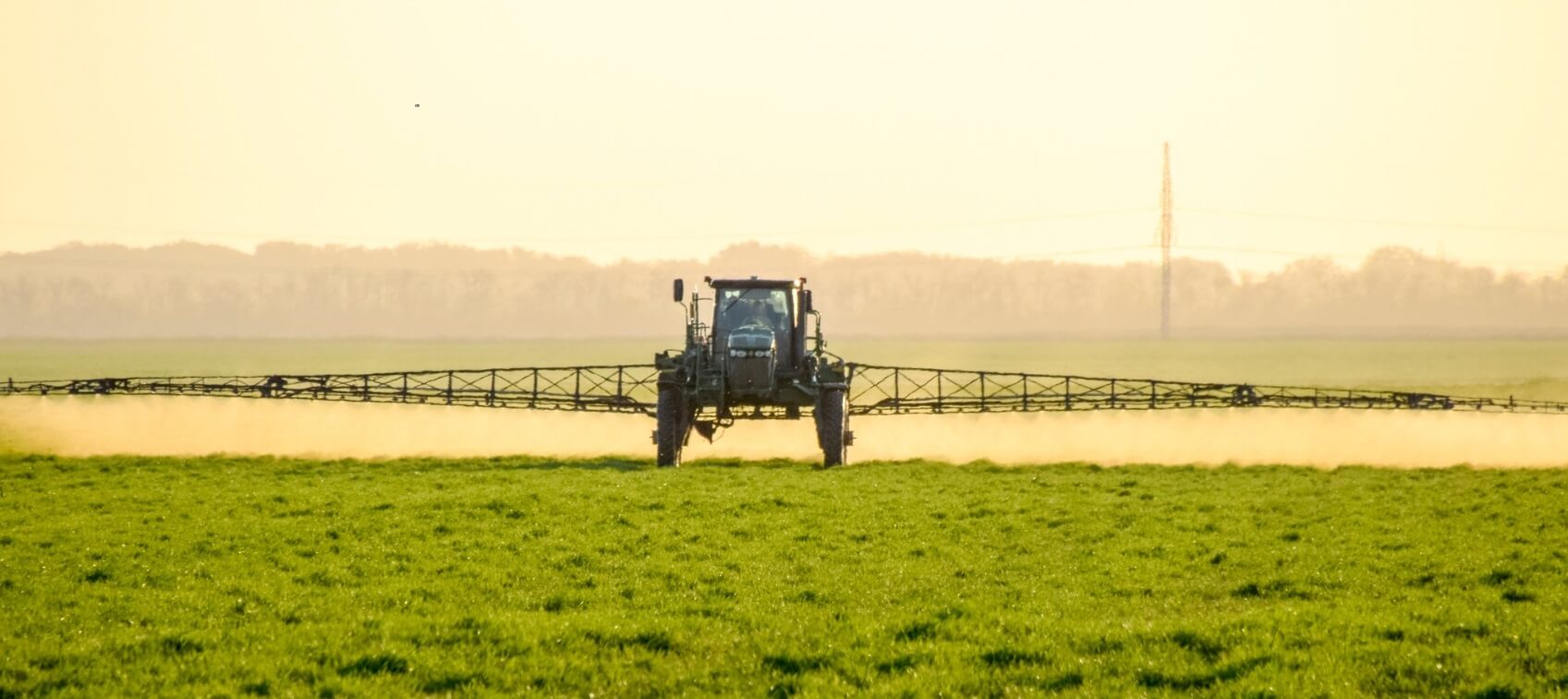
Glyphosate is the main chemical compound found in products such as Roundup Ready® and is the most widely used herbicide in the world.
Farmers spray it on food crops to kill weeds and use it as a desiccant to aid in drying crops to speed up a harvest. You may even notice neighbors using this type of herbicide to kill pesky weeds growing in their gardens.
Plus, Its Uses Go Beyond Killing Weeds
Although glyphosate as an ingredient serves primarily as a weed killer and desiccant, it’s also classified and works mechanistically as a:
- Pesticide
- Antibiotic (a VERY weak antibiotic, but originally patented as one)
- Plant growth regulator
- Inhibitor of the shikimate pathway, which affects amino acid and protein synthesis in plants
This chemical compound is also sprayed on genetically modified (GMO) foods (soy, canola, corn, cotton) and non-GMO foods alike.
Since glyphosate doesn’t get stored in fat or enter through the skin easily, and is broken down relatively quickly, industry experts proclaim that the levels found in foods and the environment do not pose any health hazards.
Critics argue, however, that long-term cumulative exposure to glyphosate residues through foods and the environment poses very real health risks.
The Safety Debate
Researching and writing about glyphosate is akin to the health debate surrounding EMF’s (electromagnetic fields): there is research on both sides showing completely different safety records and effects on human health.
There is also a debate about whether glyphosate alone is toxic, or whether the additional ingredients found in products like Roundup Ready—such as certain surfactants—are what’s responsible for the alleged deleterious effects.
If you believe consultants of companies commercializing glyphosate-based herbicides, it’s considered safe at levels below regulatory permissible limits. However, if you believe research conducted by independent scientists, glyphosate is toxic even when present at levels below regulatory limits.
Some researchers have even concluded long-term exposure to glyphosate contributes to chronic diseases, like non-Hodgkin’s lymphoma and fatty liver, as well as rising rates of celiac disease and birth defects.
How Do We Know What to Believe?
The truth is that although this herbicide has been used since the mid-1970s, its safety is now being questioned more than ever. Thousands of lawsuits have recently been filed against Monsanto (now Bayer) about potential health risks, such as the development of cancer.
In the last year alone, Bayer has been in court a lot and has awarded victims billions of dollars in payouts. Yes, billions! This story reminds me of the tobacco industry which for years said smoking cigarettes was safe. Boy were we fooled.
In addition, in 2015 the World Health Organization’s International Agency for Research in Cancer declared glyphosate was now considered “probably carcinogenic.” This statement, along with all the lawsuits against Monsanto (now Bayer), have raised even more red flags for my trust in glyphosate.
My Advice: Follow the “Precautionary Principle”
Even though I personally suspect glyphosate is not as safe as the industry likes us to believe, based on what I’ve read and researched I cannot tell you that glyphosate is dangerous. I could be wrong, and I wouldn’t want to scare you about a chemical that may, in fact, be safe.
With all the information I’ve gathered about glyphosate, I choose to follow the precautionary principle when it comes to eating foods that may have been sprayed with glyphosate.
That means I’m avoiding glyphosate exposure as much as possible until more high-level non-industry funded studies are conducted. Until then, I am highly suspicious, and cautious about risking long-term exposure.
Practical Tips for Reducing Glyphosate Exposure
First, the bad news: glyphosate has been sprayed so heavily all over the world that it’s showing up in our water supply, breakfast cereals, oat bars, red wines, and ultimately our bodies.
But here is the good news: eating organic foods dramatically reduces your exposure to pesticides, including glyphosate, since glyphosate is prohibited from being sprayed on organic foods.
Even though eating organic foods reduces exposure, some organic foods may continue to test positive for glyphosate due to proximity to farms that spray, so it’s almost impossible to completely eliminate all sources of glyphosate exposure.
If you are curious about your glyphosate exposure there is a urine test available. The Great Plains Labs offers an inexpensive test that will show you how much glyphosate you are excreting in your urine. I’ve run this on dozens of patients and everyone (including myself!) shows some presence of glyphosate in their urine with higher amounts in those who don’t eat organic foods.
Resources:
- https://www.epa.gov/ingredients-used-pesticide-products/glyphosate
- https://www.npr.org/sections/thesalt/2019/05/30/727914874/safe-or-scary-the-shifting-reputation-of-glyphosate-aka-roundup
- https://amp.businessinsider.com/glyphosate-cancer-dangers-roundup-epa-2019-5
- https://www.ncbi.nlm.nih.gov/pmc/articles/PMC5705608/
- https://www3.epa.gov/pesticides/chem_search/reg_actions/reregistration/fs_PC-417300_1-Sep-93.pdf
- https://www.sciencedirect.com/science/article/pii/S0013935119300246
- https://www.ewg.org/childrenshealth/glyphosateincereal/


